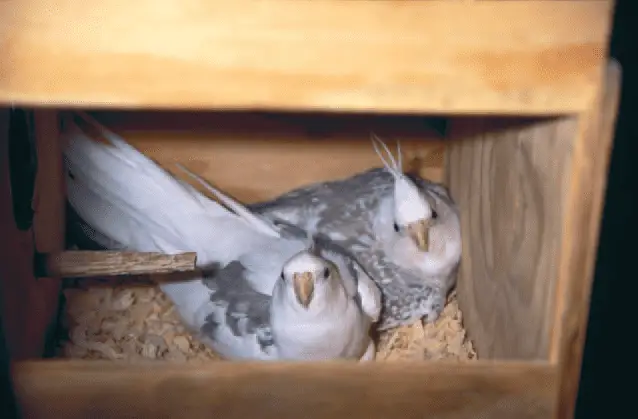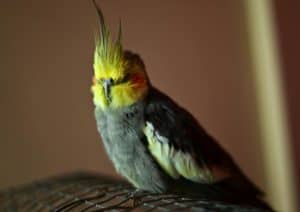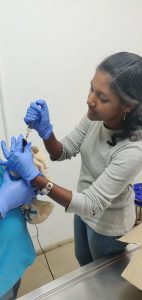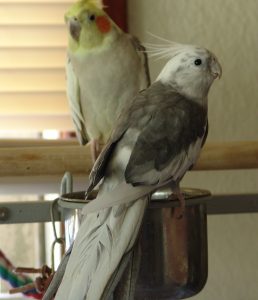When a pet cockatiel faces an emergency, every second counts. As a devoted bird owner, knowing what to do in those critical moments can make a huge difference. What are the first aids in case of emergency to your cockatiel? This question often lingers in the minds of many cockatiel owners who want to ensure they’re fully prepared to handle any situation that might arise.
From treating a broken feather to responding to signs of distress, the initial steps you take can help stabilize your feathered friend until professional help is available. I’ll guide you through the essential first aid measures that are crucial for keeping your cockatiel safe in times of need. Let’s ensure you’re equipped with the right knowledge to act swiftly and effectively, enhancing the wellbeing of your cherished companion.
What Are the First Aids in Case of Emergency to Your Cockatiel?
Preparing an essential first aid kit for your cockatiel is crucial in effectively managing any emergency situations that may arise. Keeping this kit well-stocked and ready ensures you’re prepared to handle common issues such as a broken blood feather or respiratory distress.
Key Items to Include
A fully equipped first aid kit is your first line of defense when your cockatiel faces an immediate danger. Here’s what I recommend including:
- Sterile Gauze and Bandages: These help control bleeding or cover wounds. If your bird suffers from a broken bone or a skin injury, having these materials helps stabilize the injury before you can see an avian vet.
- Scissors and Tweezers: Essential for cutting bandages or removing debris from wounds. Always ensure they’re sanitized to prevent introducing infection.
- Styptic Powder: This stops bleeding quickly, especially important for a broken blood feather, which can lead to significant blood loss if not addressed promptly.
- Antiseptic Wipes or Solution: Useful for cleaning wounds and preventing infection; choose a product safe for use on birds.
- Heat Pack: Maintaining body temperature is critical, especially if you have a sick bird or your cockatiel experiences shock or is in a cool environment.
- Contact Information for Your Avian Vet: Always have the phone number of your avian veterinarian on hand for emergencies for your sick birds.
How to Organize Your Kit
Organizing your first aid kit ensures you can find what you need quickly during an emergency. Here’s how I manage mine:
- Use a Durable, Waterproof Container: This keeps the contents safe and dry. I prefer a container with compartments or dividers for easy organization.
- Label Everything Clearly: Label each item or its compartment. This helps in a stressful situation when you might not be thinking as clearly as usual.
- Regularly Check Expiry Dates: Replace any items like saline solutions or antiseptic wipes before they expire. An out-of-date product might not only be ineffective but could also be dangerous.
- Keep the Kit Accessible: Store it in a consistent place known to everyone in the household. It’s best if it’s easily reachable but out of the range of curious pets or children.
By maintaining a well-stocked and organized first aid kit, you can ensure prompt, efficient care that might save your cockatiel’s life in an emergency.
Preparing for Common Cockatiel Emergencies
Emergencies don’t wait, and being prepared is crucial when your cockatiel faces one. I will outline what you need to do for common cockatiel emergencies, expanding on the essentials of a first aid kit addressed in the previous section. Typically, the quicker you address these situations, the better chance your pet bird has of recovery.
Respiratory Distress
Respiratory distress in cockatiels manifests as obvious signs such as difficulty breathing, increased respiratory rate, and sometimes tail bobbing. In case of respiratory distress, I keep my cockatiel in a warm, steamy environment to ease breathing.
Exposure to toxic fumes from household cleaners or aerosols is a common cause, so it’s crucial to move your bird to fresh air immediately and then seek veterinary care as soon as possible. Keeping the air moist and avoiding drafts can also help prevent further respiratory stress.
Physical Injuries: Cuts, Abrasions, Fractures
Physical injuries like cuts, abrasions, and fractures can occur quite suddenly, especially in a free-flying environment with wild birds or when there’s interaction with other pets. In such cases, my first step is to control the bleeding.
Applying pressure with sterile gauze directly on a wound can manage blood loss effectively. In cases of broken bones or severe trauma, immobilizing the bird and avoiding excessive handling is important to prevent further injury. Promptly consulting an avian vet is crucial to properly address fractures or more severe injuries.
Poisoning and Toxicity
Accidental ingestion of toxic substances can be life-threatening for cockatiels. Common toxins include certain human foods, heavy metals like lead, and even some indoor plants. If I suspect my cockatiel has ingested something toxic, I first try to identify the substance and then contact an avian veterinarian immediately.
If safe to do so, offering food that can help reduce absorption in the bird’s system, such as a tiny amount of activated charcoal, might be recommended by a vet, but ensuring correct dosage is critical and should be directed by a professional.
Continuously updating your knowledge about potential hazards, maintaining a secure environment, and knowing local emergency contacts can make a substantial difference in managing these emergencies efficiently and effectively.
Steps to Handle an Emergency
When a cockatiel emergency arises, knowing the correct steps to handle the situation can save your bird’s life. The following sections guide you through initial assessments, providing first aid, and when to seek professional veterinary help.
Initial Assessment
I’ll start by carefully observing my cockatiel’s behavior and physical condition to identify any signs of distress or injury. Key observations include difficulty breathing, bleeding, or inability to perch. I’ll ensure to keep my bird calm and restrict unnecessary movements, which could exacerbate the problem.
- Check for Responsiveness: I’ll gently call my cockatiel’s name and observe any response or movement.
- Examine for Injuries: Looking for any signs of bleeding, broken bones, or trauma is crucial.
- Assess Breathing: I’ll note any irregular breathing patterns or tail bobbing that indicate respiratory distress.
When and How to Provide First Aid
Immediate and appropriate actions can significantly impact my cockatiel’s recovery. I’ll always have my first aid kit ready, including sterile gauze, warm saline, and an emergency contact number for my avian vet.
- Control Bleeding: If there’s an injury causing bleeding, I’ll apply pressure with sterile gauze.
- Handle Fractures: For suspected broken bones, I’ll stabilize my bird and avoid manipulating the affected area.
- Address Respiratory Issues: Creating a steamy environment can help if my bird shows signs of respiratory distress, but I’ll avoid forcing water or medications without vet advice.
Seeking Professional Ranking
Even after administering first aid, some situations require immediate veterinary attention to ensure my bird’s health isn’t at further risk. I’ll contact my vet immediately as soon as I identify any serious conditions.
- Persisting Symptoms: If symptoms like bleeding or difficulty breathing persist after first aid, I’ll seek veterinary help immediately.
- Severe Conditions: For life-threatening conditions such as seizures, severe respiratory distress, or suspected poisoning, I’ll ensure my bird reaches professional care without delay.
- Post-Injury Care: Following any emergency, consulting with an avian vet helps to understand any long-term care requirements to prevent future incidents.
This structured approach in handling emergencies with my cockatiel ensures I’m prepared to act swiftly and appropriately, minimizing stress for both my pet and myself.
Creating an Emergency Response Plan
When a cockatiel emergency strikes, quick response and a structured plan are critical. This section delves into the importance of acting fast in emergencies and keeping crucial contact information at your fingertips.
Importance of Quick Action
Responding swiftly to an emergency involving your pet cockatiel can significantly influence the outcome. Immediate action reduces the risk of prolonged suffering and potential complications. For instance, in cases like difficulty breathing or a broken blood feather, knowing what steps to take right away—such as applying pressure to control bleeding or creating a calming environment—can stabilize your bird until you can get professional help.
Acting fast also means assessing the situation accurately. Recognize signs of distress like tail bobbing, respiratory distress, or unusual quietness, and apply the necessary first aid steps. This early intervention can be life-saving, especially in preventing conditions from worsening.
Contact Information for Avian Veterinarians
Having the contact information for a qualified avian veterinarian readily available is crucial in emergency situations. Save the contact details in your phone and keep a physical copy in an easily accessible place, perhaps alongside your cockatiel’s first aid kit.
Regular visits to the vet play an essential part in your bird’s health, ensuring they receive preventative care. However, knowing where to seek immediate help when emergencies like head trauma or severe stress occur is just as vital. Locate an avian veterinarian who specializes in pet birds, as they will have the specific expertise required to treat unique conditions related to cockatiels.
By preparing and keeping this contact information handy, you ensure that if your cockatiel faces an immediate danger, you won’t waste valuable time searching for a vet, enabling faster, possibly life-saving medical intervention.
Being equipped with the right knowledge and tools can make a significant difference in managing emergencies with your cockatiel. Remember, the key to effective first aid is promptness and precision. Keep your first aid kit accessible and ensure you’re familiar with the steps to address different types of emergencies.
Whether it’s handling respiratory issues or injuries, your preparedness can help stabilize your pet until professional care is available. Always prioritize your cockatiel’s health and safety by staying informed and ready to act when necessary.
Frequently Asked Questions
What should be included in a cockatiel first aid kit?
A well-stocked cockatiel first aid kit should include sterile gauze, bandages, scissors, tweezers, antiseptic spray, cotton swabs, saline solution, and styptic powder to control bleeding. Also, include your vet’s contact information and a first aid manual for birds.
How can I help my cockatiel if it shows signs of respiratory distress?
Immediately move your cockatiel to a warm, steamy environment to help alleviate respiratory distress. Use a vaporizer or place them in a bathroom with the hot shower running. Contact an avian veterinarian urgently as respiratory issues can escalate quickly.
What immediate actions should be taken if a cockatiel suffers physical injuries?
If your cockatiel has a physical injury, gently apply pressure to any bleeding areas with sterile gauze to control bleeding. Avoid using cotton as it can stick to wounds. Keep your bird warm and contained, and seek immediate veterinary attention.
What steps should I take if I suspect my cockatiel has been poisoned?
If poisoning is suspected, do not delay; contact an avian veterinarian immediately. Avoid trying to make the bird vomit and do not give any food or water unless instructed by a professional, as this could worsen the condition.
How can I prepare for a cockatiel emergency?
Regularly update your first aid kit, ensure all family members know where it is located, and keep your veterinarian’s contact information accessible. Train in basic avian first aid and create an emergency plan that includes quick transportation methods to the nearest avian vet.
When should professional veterinary help be sought for a cockatiel emergency?
Always seek professional veterinary help if your cockatiel shows severe or unusual symptoms, or if you feel unsure about providing the correct first aid care. Early professional evaluation and treatment can be critical, particularly in cases of respiratory distress, serious injuries, or suspected poisoning.
For those curious about whether cockatiels like the dark, you might find the information in this article particularly enlightening.
If you are trying to build a stronger bond with your feathered friend, you may want to read about how to get a cockatiel to sit on your finger.
Taming a cockatiel that bites can be challenging, but there are effective methods to address this behavior. Check out this guide for more information.
Have you ever wondered why cockatiels have crests? Understanding this unique feature can give you deeper insights into their behavior and moods. Read more about it here.
Additionally, if you’re unsure about whether cockatiels can take showers and how to properly bathe them, this article is a must-read.






